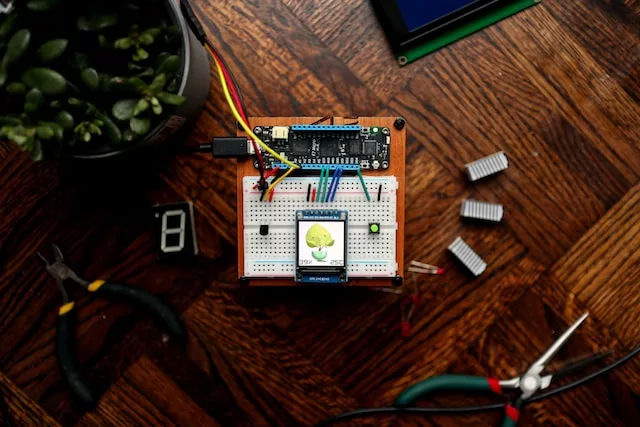The Internet of Things (IoT) is a rapidly advancing branch of technology that enables the connection of various devices and systems to efficiently collect, process, and exchange data. Within this technological revolution, IoT sensors with on-site data processing features are a crucial element, allowing for swift and effective management of information in real-time.
Development of IoT Sensor Technology
Traditional IoT sensors collect data, which is then transmitted to the cloud or a central processing system. However, sensors equipped with advanced on-site data processing features are becoming increasingly prevalent, bringing numerous benefits.
- Reduced Delays:
On-site data processing enables the quick analysis of information without the need to transmit it to an external cloud. This, in turn, shortens the system response time, which is crucial for applications requiring an immediate reaction, such as security monitoring systems or traffic control. - Network Bandwidth Savings:
In traditional solutions, large amounts of data must be transmitted over the network, leading to congestion and reduced efficiency. Sensors with on-site data processing capabilities allow for the transmission of only essential information, reducing network load and speeding up data transmission. - Enhanced Privacy and Data Security:
Local data processing minimizes the risk of data loss due to cyberattacks or issues related to the security of data transmission over the network. This is a crucial aspect, especially concerning sensitive data such as medical information or personal data. - System Flexibility:
Sensors with built-in data processing capabilities allow for greater flexibility in tailoring the system to a specific application. The ability to adjust algorithms without intervening in central systems makes these solutions more scalable and easier to configure.
Examples of Applications
- Environmental Monitoring:
Sensors measuring atmospheric parameters or air quality can locally analyze data and provide warnings about potential threats before the information reaches the central monitoring system. - Smart Buildings:
Presence or temperature sensors can locally control air conditioning or lighting systems, without the need to transmit data to the cloud and await a response. - Security Systems:
Motion sensors or monitoring cameras can locally analyze data to detect potential threats before the information reaches the security central.
IoT sensors with on-site data processing features introduce a new dimension to intelligent systems, improving their efficiency, security, and flexibility. Thanks to these innovations, our digital future becomes more efficient, responsive, and tailored to the individual needs of users.

